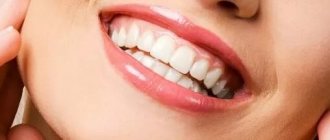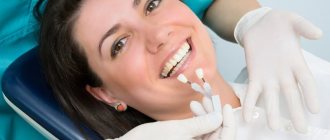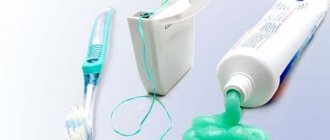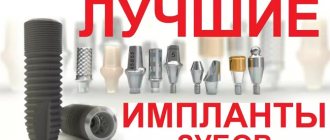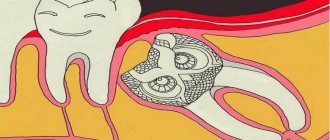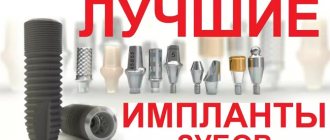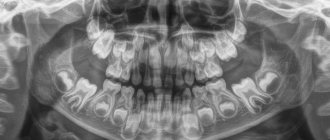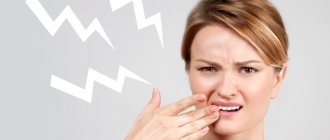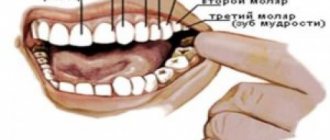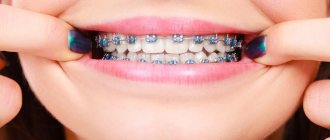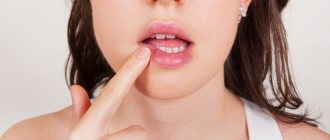A tooth is a full-fledged part of the body, like all other organs and systems. It performs important functions. Teeth are needed for grinding food, clear pronunciation of sounds, aesthetics (improving appearance), they are a kind of frame for the muscles of the maxillofacial area.
Adults and children have different sets of teeth (20 primary and 32 permanent), and the timing of their eruption is also different. It also happens that there are more or less than the required value. Is this considered a pathology, or is removal of supernumerary organs not required? Which ones grow first - incisors, canines or molars? We will talk about all this and the relationship between teeth and internal organs, as well as the main interpretations of astropsychology in this article.
Concept and signs of supernumerary teeth
Hyperdentia (hyperdentia from hyper and lat. dens, dentis tooth) is an anomaly in the number of teeth.
Up to a certain age, children should ideally have twenty milk teeth, which are gradually replaced by permanent ones, and there are 32 of them. With hyperdontia, these numbers shift by one or more positions in a larger direction, since in this case there are one or several more tooth buds than normal.
Supernumerary teeth, as a rule, erupt after the main teeth, but there are exceptions when the supernumerary has erupted and taken the place where a normal tooth should be. As a result, teeth shift and bite changes. Only in rare cases does hyperdontia make itself felt during the period of milk eruption. Most often, this anomaly occurs among men, which accounts for about 65% of the total number of such cases.
In 15% of cases of this anomalous phenomenon, more than two supernumerary teeth erupt on the gum or palate. The most common phenomenon among hyperdontic anomalies is the eruption of supernumerary teeth in the area of the lateral incisors on the upper jaw, and less often on the lower jaw. Such teeth may differ from normal ones in shape, structure, color, which indicates their abnormal origin.
Sensation: 33 teeth - myth or truth?
04/20/201604/20/2016 Category: Our publications
In the elite dental clinic of Alexander Dante you can get rid of tooth sensitivity, bleeding gums, toothache, cure caries, carry out its prevention, cure periodontitis, periodontal disease, change the bite without using braces, restore and strengthen tooth enamel, restore lost teeth, get rid of chips and cracked teeth, and much more. If the health of your teeth is important to you, contact our clinic. For you, we have been developing unique proprietary treatment methods since 1985. How many teeth should a person have? 32 teeth is, so to speak, a complete set of teeth that is given to us by nature. But recently, the absence of molars has become increasingly common. That is, molars do not grow due to eating softer foods, as well as due to altered development of the jaws. It is not uncommon for a person to grow only 28 teeth. And this is considered the norm. In the practice of dentists, there are patients who grow a 33rd tooth. This is not a myth, this is reality! About the 33rd tooth This phenomenon is called a supernumerary tooth. If you become the owner of 33 teeth, then don’t worry. Contact your dentist for advice. If this tooth does not bother you, then there is no need to remove it. Just practice good oral hygiene. Do you want to have a 33rd tooth? As mentioned earlier, not everyone grows 32 teeth, let alone 33. If you are missing one or more teeth and need their restoration, contact the elite dental clinic of Alexander Dante. Here they will help you correct the situation. Your teeth will look natural and beautiful. You can make an appointment with Alexander Dante at a time convenient for you. Even if you come to us without one or more teeth, in less than 3 hours you are guaranteed to be able to delight others with a beautiful smile. Upon completion of any dental procedures: treatment of diseases of the teeth and gums, teeth whitening, prosthetics - after any work performed by the doctor, you will be given a 5-year guarantee. If during this time you have a dental problem, everything will be corrected at no extra cost.
Unlike the usual inhumane method of prosthetics, which destroys the integrity of adjacent teeth, Dr. Dante’s prosthetic method allows you to avoid grinding down the adjacent teeth. You will not experience pain or discomfort because no nerve will be removed from the teeth on which the structure will rest. Before starting prosthetics, teeth are painlessly cleaned using a laser. Natural cracks and cavities of the tooth are filled with carbon fibers. In the space between the teeth, a carbon fiber truss is created, which, like a bridge, will carry the load, transferring it to the outer teeth. Next comes artistic restoration of the teeth. As a result, in half an hour to an hour a beautiful artificial tooth will be created, no different from the real one. If desired, the artificial tooth can be decorated with a precious stone. One of the main advantages of this proprietary method of dental prosthetics is time saving and quality assurance.
If you want to restore lost teeth or increase your thirty-third teeth, contact the elite dental clinic of Alexander Dante. Everything is possible in our dental clinic! Including gaining the 33rd tooth if you really want to!
More detailed information about services can be found on the website www.microdent.ru/.
Why do regular fillings fall out? Chocolate smile
microdent.ru
Hyperdontia in an adult
In adults, hyperdontia is much more common than in children. Additional teeth are mainly located in the palate or on the gums, which is unnatural and contrary to the norm. The eruption of an “extra” tooth can cause the following symptoms:
- Impaired diction. The person begins to burr and vaguely pronounce some sounds and sound combinations.
- A feeling of discomfort caused by the abnormal position of supernumerary teeth. Such teeth provoke curvature of the dentition.
- Malocclusion. This problem entails a number of dental diseases, such as pathological tooth wear, impaired diction and others.
- Damage to the oral mucosa with subsequent inflammation;
- Impaired chewing function, which leads to gastrointestinal problems.
This type of anomaly often causes nervous breakdowns and mental disorders. Due to the displacement of the dentition, healthy teeth lose their strength and begin to loosen under the pressure of the growing supernumerary rudiment. The jawbone swells, which leads to pain. Constant aching pain leads to irritability, apathy and deterioration in general well-being.
Will a new tooth grow if you really want it?
Supporters of spiritual practices are confident that it is possible to provoke the appearance of new teeth if you call on them with the power of thought. To do this, you need to transfer to the body a detailed thought form of the object that you would like to grow naturally.
As a guide and incentive for the experiment, you can use the book by Mikhail Stolbov, in which he talks about how he managed to grow 17 new teeth.
In the book, the author tells his story, which began while serving in the army. A young soldier had almost all his teeth knocked out with a stool in a fight.
In the years following the army, Mikhail Stolbov constantly changed his dentures. He came to terms with his defect. But, as fate would have it, the man was literally locked up for a year in the Siberian taiga. In forced confinement, he developed a disease that made it impossible to wear prosthetics.
After this, Mikhail began to think about alternative ways to solve his problem. And he found a way out. Stolbov no longer wears dentures. He grew 17 new snow-white teeth, contrary to current medical dogma.
The man does not know what was the impetus for the wonderful event.
Hyperdontia in children
Sometimes the eruption of extra abnormal teeth in children is almost asymptomatic. The only sign of polyodontia is the number of teeth erupted, which exceeds a certain norm for a particular age. Most often, this anomaly is accompanied by a number of unpleasant symptoms, which should cause concern among parents and become a reason to consult a dentist.
Signs of polyodontia in children:
- a rapid increase in temperature, which is difficult to bring down and lasts from one to several days;
- a strong aching or throbbing pain is felt at the site where the irregular tooth erupts;
- there is a feeling of discomfort when talking, eating, drinking;
- a slight swelling of the cheek and even the wing of the nose is noticeable on the side where the extra element erupts;
- due to excessive salivation as a reaction to an irritating factor, a wet cough and difficulty breathing may occur;
- gastrointestinal disorder as another reaction of the body to the inflammatory process and high temperature.
The symptoms of the eruption of supernumerary teeth in children are similar to those observed when the first milk teeth appear, only in this case the situation is a little complicated by the fact that the germination of an extra tooth is not something normal and inherent in nature. This makes it more difficult for the child to tolerate this phenomenon than the eruption of healthy baby teeth.
Pain after dental implantation
The first disadvantage that scares many is the pain after installing the implant. It appears immediately after the anesthesia wears off and lasts for several days. It is caused by the fact that the surgical implantation procedure involves some damage to soft tissue and bone, which must subsequently regenerate, as well as the placement of a metal pin - an artificial root - into the jaw, which must take root.
In the vast majority of cases, the damage heals within three to five days, and the pain after dental implantation, which is dull, aching, and not very pronounced, gradually stops. These unpleasant sensations are comparable to pain after tooth extraction and disappear completely within a week after surgery.
If the pain is severe, has a cutting, pressing or jerking nature, is poorly eliminated by analgesics and does not go away within 3-5 (maximum 7) days after surgery - this may be a sign of the onset of a pathological process and almost always (with very rare exceptions) indicates about mistakes made during implantation.
Causes of jaw abnormalities
To date, doctors have not reached a unanimous opinion about the causes of such an anomaly as hyperdontia. There are different hypotheses about this:
- Atavism. Historians have proven that primitive people, due to the way of life they led, naturally had 36 tooth primordia. The results of studies of the remains of those times indicate that people had six incisors on the upper and lower jaws. Therefore, polyodontia is a kind of genetic anomaly that makes itself felt after thousands of years;
- Many doctors are inclined to the theory that one embryo splits into several in the womb, when, in fact, they begin to form. This theory also states that an anomaly can develop throughout pregnancy if it was quite severe, the woman suffered serious illnesses or led an unhealthy lifestyle (bad habits, drugs, alcohol and others);
To date, research continues to establish the true cause of hyperdontia. Based on these data, modern doctors are more inclined to the second version than to the first.
Examples of people growing new teeth
There are cases of spontaneous regeneration in middle-aged and older people.
A real medical sensation was recorded in Rostov-on-Don. A young 28-year-old woman, Evgenia Baykova, has grown 33 teeth. This fact was officially certified by local dentists. Evgenia claims that she grew it through willpower.
In the Kazakh city of Kyzyl-Orda, a hundred-year-old grandmother erupted new teeth. This sensational message was broadcast on television. The woman’s rejuvenation process, according to her relatives, began with a rise in temperature. By the way, he also touched his hair. Among the strands that had long since turned gray, she had completely black curls.
There is also other evidence of people suddenly growing new teeth. An example of this phenomenon can be seen in the video.
What is the secret of such amazing behavior of the body? What triggers the natural restoration of organs?
After all, if there is a way to grow new teeth, then why endure the pain of going to the dentist and paying a lot of money for installing implants?
Types of hyperdontia
Depending on the location of the supernumerary teeth, several types of polyodontia are distinguished:
- Conical or awl-shaped tooth . In this case, excess rudiments erupt between the upper central and lateral incisors. The name of the anomaly comes from the peculiar shape of the supernumerary tooth, which looks like an awl. This form of hyperdontia is dangerous because the sharp end of the tooth often injures the mucous membrane, which is why an inflammatory process develops when an infection gets there.
- Additional molars . Such teeth grow between the main molars, displacing the dentition from the correct position.
- Extra fangs . This type of anomaly is typical for the upper jaw.
- Supernumerary premolars . These additional teeth are located on the lower jaw. Each type of anomaly looks different depending on where and how the extra teeth are located. These differences can be clearly seen in the photo.
Universal system
It was developed in 1882 by Jesus Perreidt. To this day, this numbering method remains the simplest. Each tooth has its own specific number. The American Dental Association (ADA) approved this system in 1975. Since then, it has been a staple in US dental clinics.
Number 1 in the ADA system was given to the upper right molar. The remaining teeth are numbered clockwise from it. The lower right molar has the number 32. There are two designations for primary teeth - in Latin letters from A to T or numbers from 1 to 20 with the letter d.
Despite the apparent simplicity of the ADA system, it has a significant drawback. The number does not correlate with any anatomical features, so they need to be remembered. An advantage of the method is the convenience of notation on computer models.
Diagnostic methods
Diagnosis of polyodontia is carried out exclusively by a specialized doctor - an orthodontist, who conducts a preliminary examination of the oral cavity and dentition, refers the patient to x-rays (orthopantomography) and analysis of anthropometric casts of teeth made of plaster. Such models are made for a more detailed study of a specific anomalous phenomenon, on the basis of which a diagnosis is then made and treatment is prescribed.
Table of normal human teeth. Deviation from the norm - polyodontia
When examining plaster models made on the basis of dental casts, the doctor measures the size of the teeth, and then analyzes the data obtained based on a special table by Wetzel and Ustimenko. The length of each row of teeth must be measured. This indicator may fluctuate depending on such characteristic individual characteristics of a person as crowding of teeth or the presence of large gaps between them. In the first case, the length will be less than normal, and in the second, a little longer. To diagnose asymmetry, the distance from the midline of the palate (or hyoid frenulum) to the far point of the dentition in one direction or the other is determined.
Numbering for an abnormal number of teeth
If a person has a normal number of teeth in his mouth, then their numbering does not cause difficulties and remains constant both at a young age and after 60 years.
If some teeth are lost (for example, due to various diseases or developmental anomalies), then in the dental formula next to the corresponding number its absence is simply indicated.
But there are diseases of the dental system, which are characterized by an increase in the number of teeth with an atypical arrangement. With such options, the use of any numbering schemes is difficult and most often dentists refuse to use them. In this case, complete information about the number of teeth, their description and location is entered into the patient’s medical documentation.
What to do?
The presence of supernumerary teeth is an abnormal phenomenon, so the issue of eliminating this problem must be resolved. How, this is another question, to give an unambiguous answer to which is impossible. As a rule, there can be several ways to solve a problem. The choice of treatment method depends on where the extra tooth is located, what shape it is, and what stage of eruption it is at.
Facilitating teething in baby
Drug treatment allows you to relieve unpleasant and painful symptoms during the eruption of excess buds. This option is the only one for children with baby teeth if the tooth is only at the eruption stage. When it finally germinates, it will be necessary to use more radical methods. The dentist prescribes medications that will help relieve pain, reduce fever and stop the inflammatory process in the soft tissues of the gums.
Simple tooth extraction
Surgery. This method is the fastest and most effective, since removing an extra tooth easily solves the problem and relieves a person from unpleasant sensations and discomfort. This treatment method is used when there is too little space in the dentition for an extra tooth or there is no space at all. Most often, supernumerary teeth are removed when there is crowding of the teeth. To free up some space in the dentition, the wisdom teeth are removed first, and if this was not enough, the premolars are also removed.
Braces and other orthodontic treatment methods
Orthodontic treatment is a method that involves correcting the bite, straightening the teeth, etc. The result is achieved by installing braces or other orthodontic structures that allow you to straighten crooked teeth and return them to their place, where they should be. The duration of wearing braces depends on many factors:
- the age of the patient (children have their own specifics);
- complexity of the situation;
- locations of supernumerary teeth and others.
At the first and second stages of the disease, the doctor may decide to install special expansion plates or aligners. Can also apply the separation method.
Consequences of poor quality treatment
If the treatment is not well-carried out, impacted teeth will continue to interfere with the normal development of the bite and dentition, which causes a violation of chewing ability, leading to a number of problems with the gastrointestinal tract, and impaired diction, which negatively affects pronunciation and pronunciation. Also, after unsuccessful treatment, healthy teeth that are located next to the additional one may begin to deteriorate.
Preventive measures
The essence of preventing dental anomalies is to eliminate the possible causes of their appearance even at the stage of formation of rudiments, that is, all responsibility for possible dental anomalies depends entirely on the child’s mother.
To prevent this unpleasant phenomenon, you need to eat right, food should be balanced and healthy. It is important to give up bad habits and follow your doctor’s recommendations. When the baby is small, you need to make sure that he does not suck his finger or pacifier for more than a year and regularly take him for examinations to the dentist for timely detection and elimination of dental problems. Moscow metro station Zvezdnaya, Danube Avenue, 23
Each organ has its own tooth
It has been known since ancient times that the condition of a particular tooth can determine the disease in the corresponding group of organs. Today this is a scientifically proven fact. For example, by using the incisors above and below (teeth 1 and 2), diseases of the ears, bladder and kidneys can be diagnosed, and by the canines (3) the condition of the liver and gallbladder can be determined. Small molars (premolars 4 and 5) transmit data about the lungs and large intestine, and large molars (molars 6 and 7) about the stomach, spleen and pancreas, and the so-called “wisdom teeth” can tell about the condition of the heart and small intestine .
At the same time, affected teeth identified by a dentist during an examination do not always mean the presence of diseases in the corresponding internal organs. It happens that a patient presents with pain in apparently healthy teeth or even with phantom pain (a painful signal comes from an internal organ to the site of the extracted corresponding tooth). Knowing about these relationships, it is easier to identify the affected organs.
What is the correct name for the gap between the front teeth?
The correct name for the gap between the front teeth is diastema, which goes back to the Greek word diástema (Greek διαστημα). The term means "distance", "span" or "interval". Although in Greece the word was used without reference to dental disease, today diastema refers specifically to a dental problem.
A more simplified, but also correct name for the gap between the teeth is a gap or chip. This word is used primarily in literary language and works of art. But no matter what you call the problem, it still needs to be treated: although diastema is not the most unpleasant dental pathology, it remains a defect that can cause a number of dental problems.
